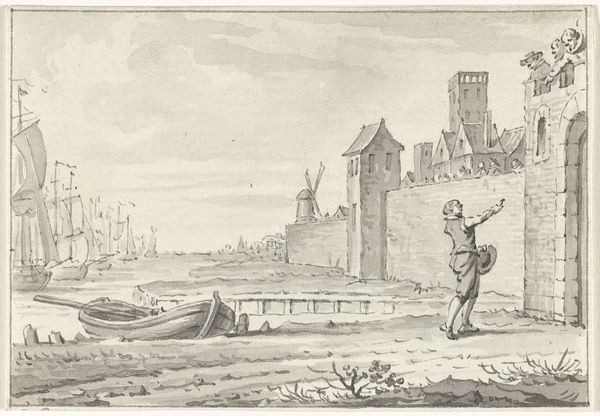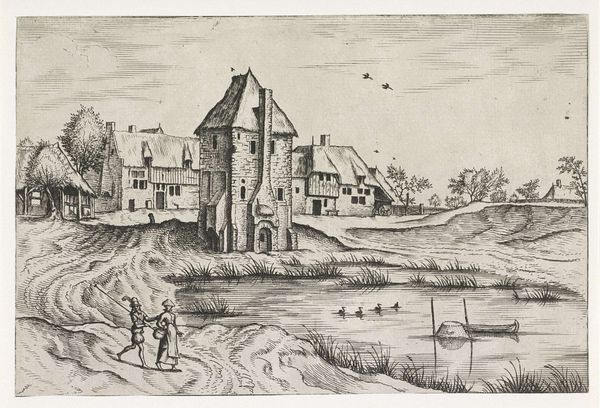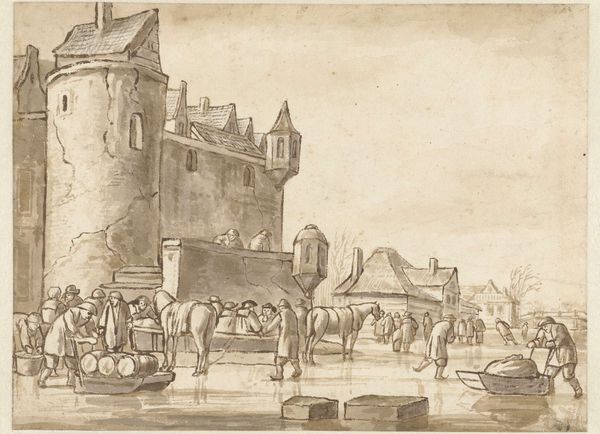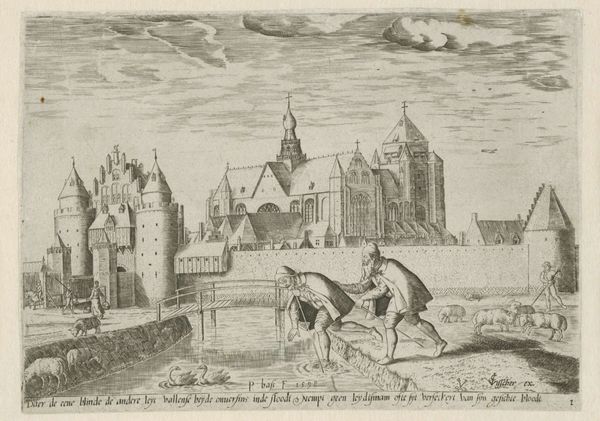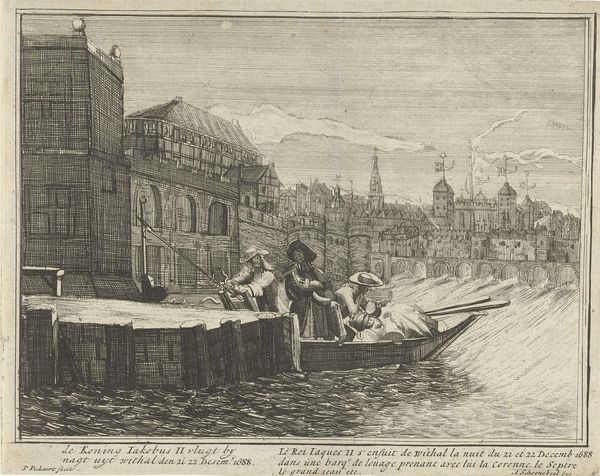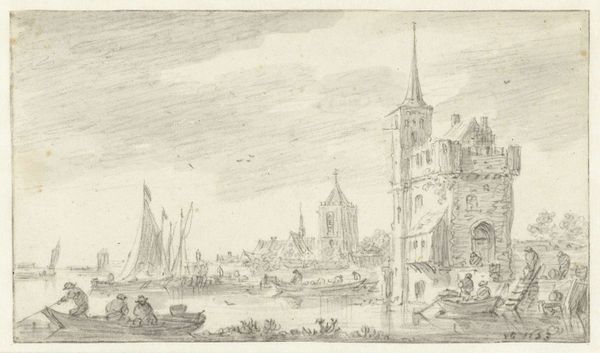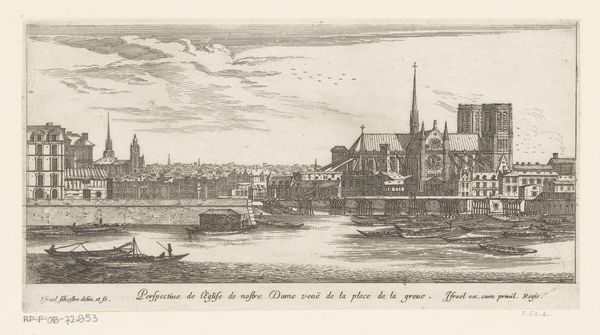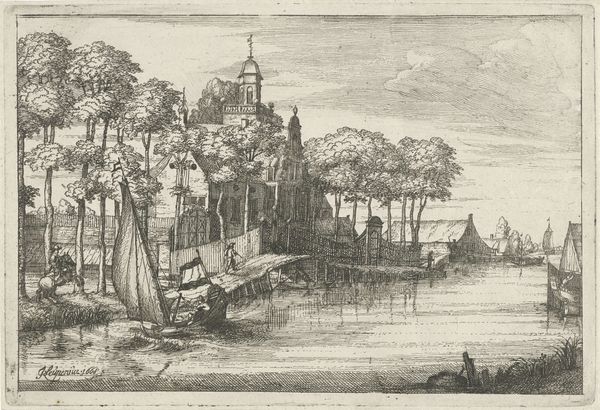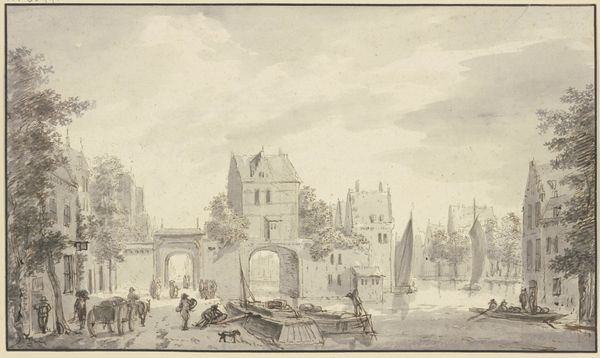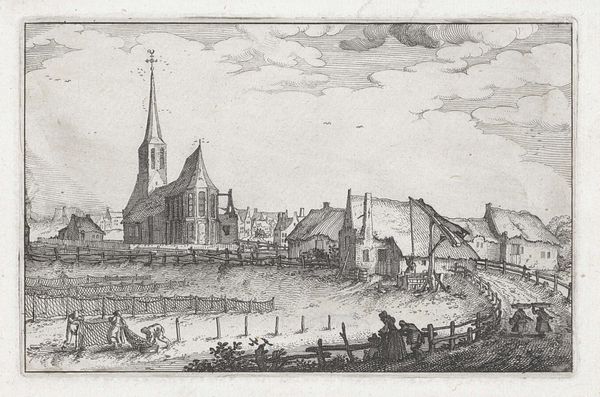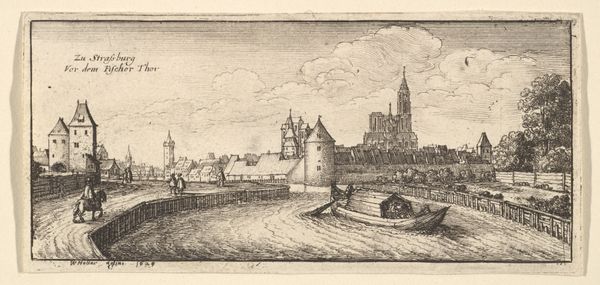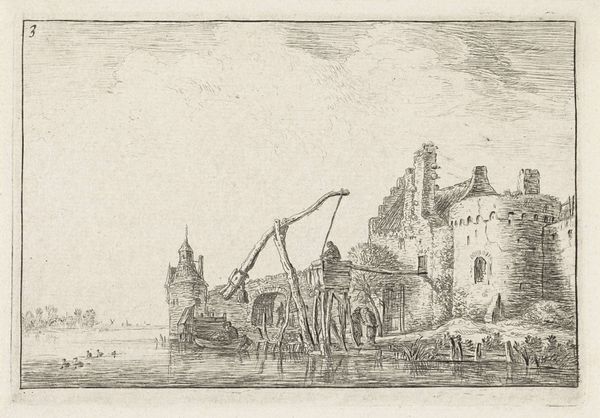
#
aged paper
#
toned paper
#
light pencil work
#
mechanical pen drawing
#
pencil sketch
#
old engraving style
#
sketch book
#
personal sketchbook
#
pen-ink sketch
#
pen work
Dimensions: height 117 mm, width 145 mm
Copyright: Rijks Museum: Open Domain
Pieter Bast created this etching of Het Kasteel Aldegonde in 1598, using the labor-intensive technique of etching. The process begins with a metal plate, likely copper. The plate is coated with a waxy, acid-resistant ground. Bast then used a sharp needle to scratch away the ground, revealing the metal beneath. When the plate is dipped in acid, the exposed lines are eaten away, creating grooves. Ink is then applied to the plate, filling these grooves, and the surface is wiped clean. Finally, the plate is pressed onto paper, transferring the ink and creating the image. The success of the etching depends on the artist's skill in manipulating the materials, controlling the depth of the lines, and ensuring a clean transfer. The lines are precise and controlled to capture the architectural detail of the castle, and social life around it. Bast's etching demonstrates the importance of the hand in the age of mechanical reproduction. The labor of producing the image is clearly evident in the final print.
Comments
No comments
Be the first to comment and join the conversation on the ultimate creative platform.
